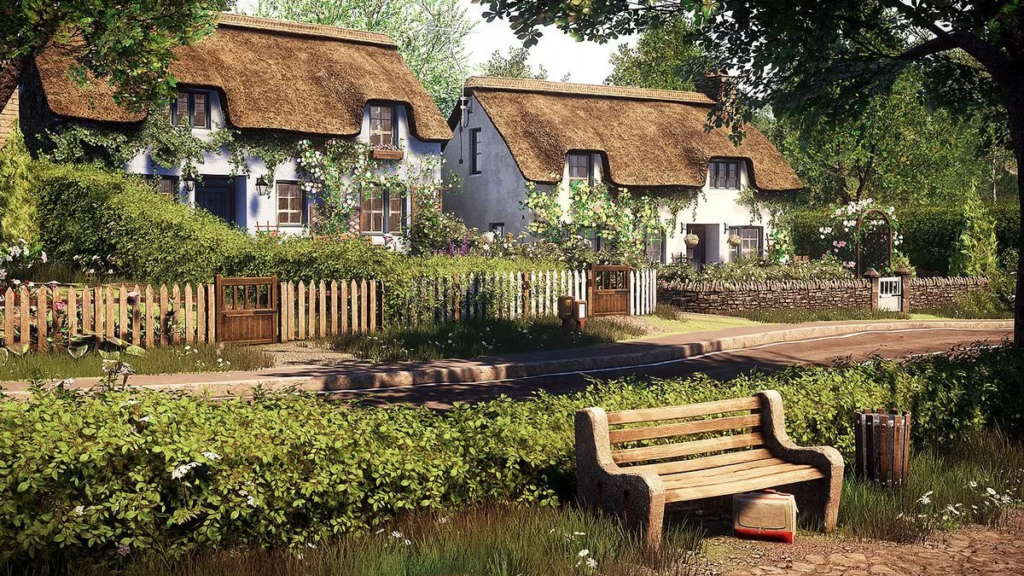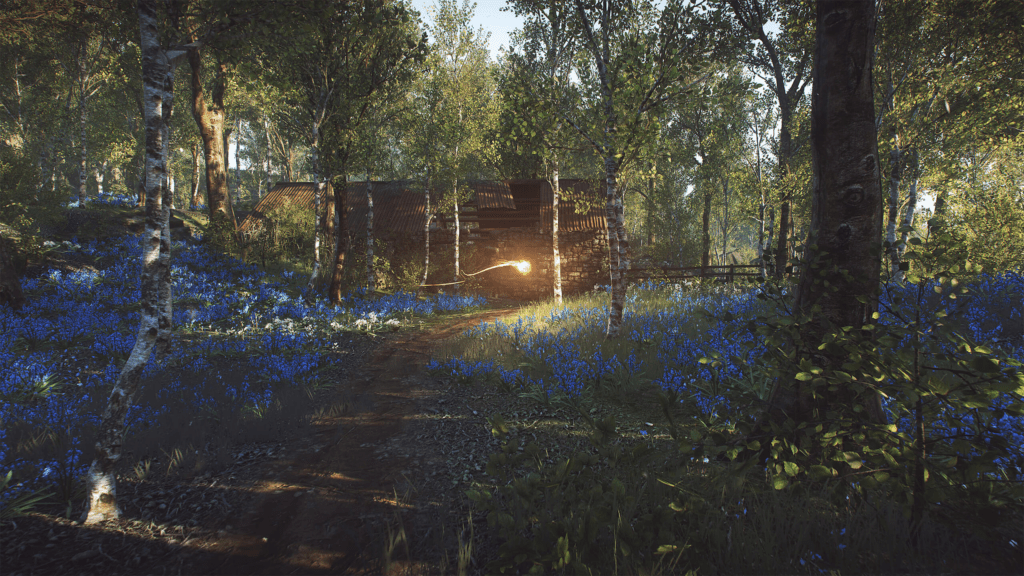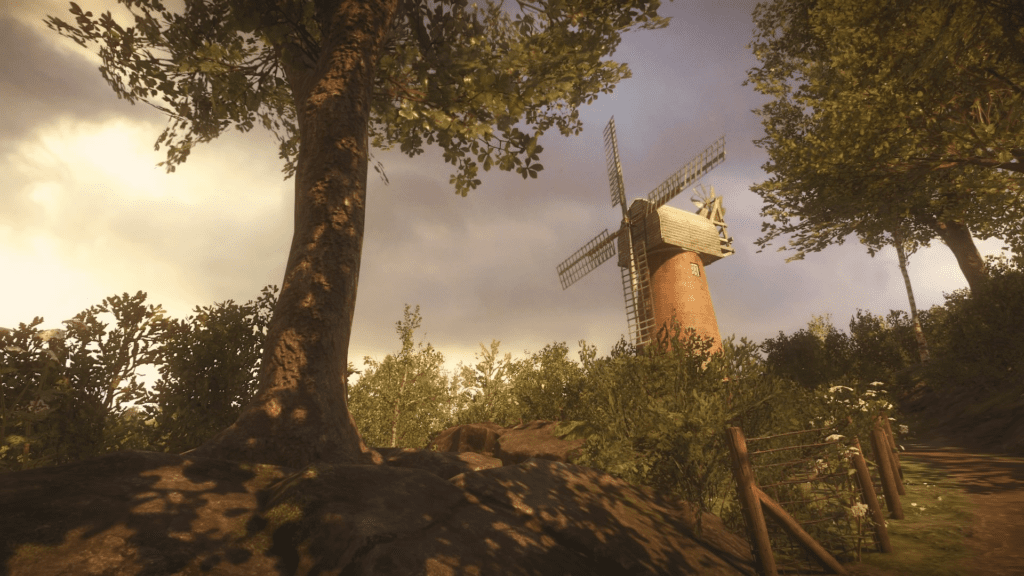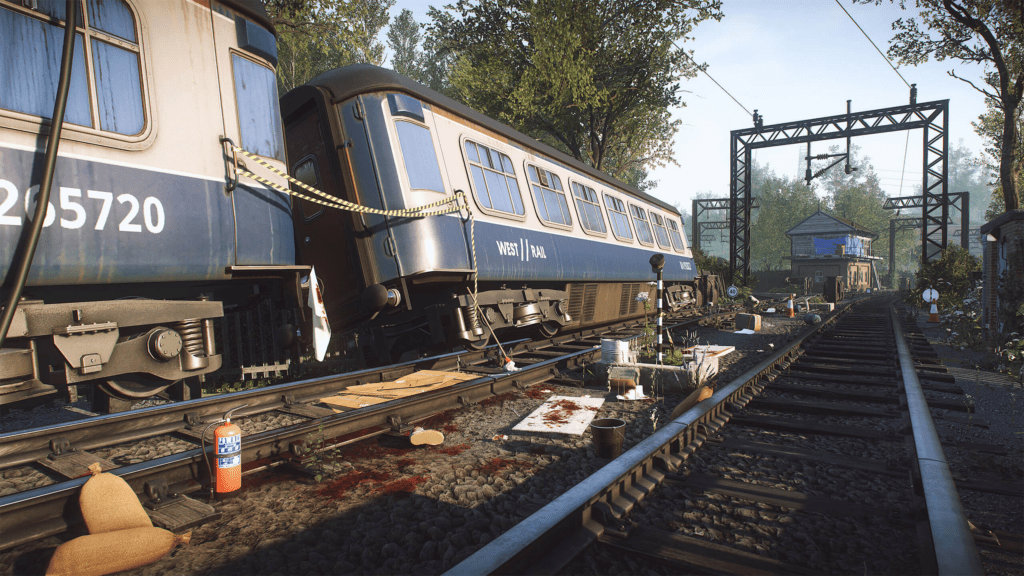Hello. I’m a very British person, and this is a review for a very British game. Everybody’s Gone To The Rapture is a haunting tale of many intertwined stories and themes, yet they’re all bundled together in a photorealistic representation of the beautiful English countryside. Sometimes we need these little reminders that it’s not all ugly grey offices and tower blocks out there.
On This Page
Introduction
Everybody’s Gone To The Rapture is an adventure game developed by The Chinese Room and published by Sony Computer Entertainment. The game takes place in a rural area of Shropshire, England which contains the fictional villages of Yaughton and Little Tipworth, plus an elusive yet respected observatory, however all inhabitants of the area have mysteriously disappeared.
The development team at The Chinese Room were inspired by “the very British apocalyptic sci-fi of the ’60s and ’70s”. Everybody’s Gone To The Rapture is considered a spiritual successor to the earlier hit ‘walking simulator’, Dear Esther (2012). The game was released for the PlayStation 4 on 11th August, 2015.

Story
The game begins in 1984 in the fictional village of Yaughton in Shropshire, England. The player controls an undisclosed visitor to the area who has bypassed as series of police and military blockades surrounding the village, only to find the entire population has vanished. The game’s title will tell you where everyone has gone, but this will not be elaborated on further.
Instead, our objective is to explore the village and surrounding areas and try to discover how and why everyone here has disappeared. Mysterious floating orbs of light float around in the air and lead the player to scenes made up of other human-shaped lights, which re-enact various earlier events.
Following the orbs’ evidence from scene-to-scene across the valley, as well as finding telephones and radios that replay past conversations, recordings, and broadcasts, and are seemingly out of sync with the space-time continuum, reveal snippets of recent events. Each tidbit of information you discover will provide a piece of the puzzle, detailing the events leading up to the ‘Rapture’.
There are five areas in the game, each of which revolves around a particular character, with the main protagonists being Dr Katherine ‘Kate’ Collins and her husband, Stephen Appleton, both scientists at the observatory. During their work, Kate and Stephen encounter a strange pattern of lights in the night sky, an unexplained phenomenon which appears to react to Kate’s observations.

Gameplay
In Everybody’s Gone To The Rapture, the player explores in and around a small English village whose inhabitants have mysteriously disappeared. The player can interact with floating lights throughout the world, most of which can reveal parts of the story. The player can interact with objects such as doors, radios, phones, fences, and power switches.
Movement in the game is always on foot and there is no fast-travel option between areas, so you can expect to spend a good amount of time moving around. Progression is fairly linear if you stick to roads and footpaths while following the floating lights, however by doing so you’ll miss story scenes located in houses and other optional buildings, or out in the scenic fields. Note that you can slightly increase your movement speed by holding down R2 while walking and it is highly recommended to do so since the default speed is very slow.
The game does not feature a manual save option but will auto-save at specific points in the game when you trigger story-related events or conversations. The game will flash a ‘Save’ message in the bottom right corner of the screen when saving. Keep this in mind since you may wish to progress the story to a certain point before you quit playing to ensure all your obtained collectibles have successfully registered.

Graphics/Sound
The perhaps longer than expected initial loading times and the sound coming from my base PS4’s fan resembling that of a small aircraft was a sign of what was to follow. Everybody’s Gone To The Rapture is quite possibly the most beautiful game ever made. The stunning British countryside is ridiculously detailed.
Leaves rustle in the trees above you while flowers and crops dance gently in the breeze. Every house and business is uniquely decorated, some following relevant fashions of the time, while others portray a touch of individuality in their furnishings. Pubs display beautiful architecture and price lists relevant to their era, and bus stops feature local maps and graffiti.
Sunlight pierces through windows to illuminate all in its path, whilst stepping out of the shadows of dimly lit hallways and caravans results in the daytime sun realistically dazzling you, urging you to look away to regain your focus. The night sky is illuminated by a sea of stars which shimmer in the darkness like a burst of fireworks.
Complimenting the visuals is the equally spectacular sound design, with Jessica Curry’s epic score being one of her finest works, and an art-form of its own. The voice cast also deliver beautifully authentic performances throughout, including the superb talents of Merle Dandridge, Oliver Dimsdale, Aimee-Ffion Edwards, Susan Brown, and Jonathan Bailey.

Replayability/Trophies
The game has a variety of easy to obtain trophies. Some will come upon completing the game, others will come from finding certain collectibles and some will come from performing certain actions that you would likely miss while playing the game. Achieving the platinum is not particularly complicated, although it may be somewhat more time consuming than expected due to the relatively slow movement speed of your character in the game.
The most time consuming trophy in the game requires you to play through the entire game from beginning to end without missing any story elements along the way. Story elements include interacting with telephones, radios, televisions, and many, many more. A lot of patience and a few more hours of committed gameplay will be key here.
If you’re only partially interested in grabbing some trophies while you play more naturally, then skimming a guide in advance may give you a head start as you’ll already have an idea of which trophies are available and if you’re thorough enough in your exploration then it’s likely you’ll stumble through a few trophies along the way. One thing to note regarding collectibles such as ‘chads’, maps, books, etc. is that you don’t actually have to interact with them using button presses; you only need to ‘look’ at them in order for them to count.

Conclusion
The way that Rapture tells its story is nothing less than revolutionary. You’ll be hearing dozens of conversations; Only some of these conversations are relevant to the mystery at hand, yet all play their part in building up the backstories of these complex human beings who we never actually meet. There’s a near-endless exchange of conversations which flesh out many of these lost souls.
Kate, for example, is a newcomer to the observatory and treated as something of an outcast by the local community, partly because of her swift marriage to the previously happy Stephen, and also partly because she’s an African-American woman in an all-white British community. Stephen, however, is torn between his old life and his new one, seeing the talented Kate as a key tool to growing his career, while he’s still very much in love with his former fiancée, Lizzie Graves.
While the trophy-hunting community may disagree with me, it is highly recommended that you play through the story once on your own without using any sort of guide. The enjoyment in the game comes from the story and the discoveries you make while you play, and if you are spending your time focusing on a walkthrough, then it will distract from the overall experience and detract from your enjoyment of the game, pulling you out of the atmosphere which this experience lovingly provides.
If I had to make a complaint about the story, it’s that there’s one loose end which I didn’t like leaving hanging, and that is the role of the player character. Even after the credits roll, we still have no idea who we are, why we came to Yaughton and what impact we have on the future of the town. While I respect there are certain components which The Chinese Room would like to leave up to the player’s imagination, such as the nature of the ‘Rapture’ itself, the absence of a player-character identity was a niggle I had trouble letting go of.
Nevertheless, Everybody’s Gone To The Rapture is a fascinating, stunningly beautiful, slow-paced yet thoroughly enjoyable experience that should appeal to anyone who appreciates a developer taking their time to tell a story their way. It’s so incredibly unique, and that may be intimidating to some newcomers, but we wouldn’t have it any other way.
Joys
- Visually, the most beautiful game I’ve ever seen
- Fascinating storytelling with many intricate layers
- An authentic representation of rural England in the ’80s
Cons
- The ending still leaves us with one or two unanswered questions
- Trophy hunting can be a pain
- Slow movement speed



